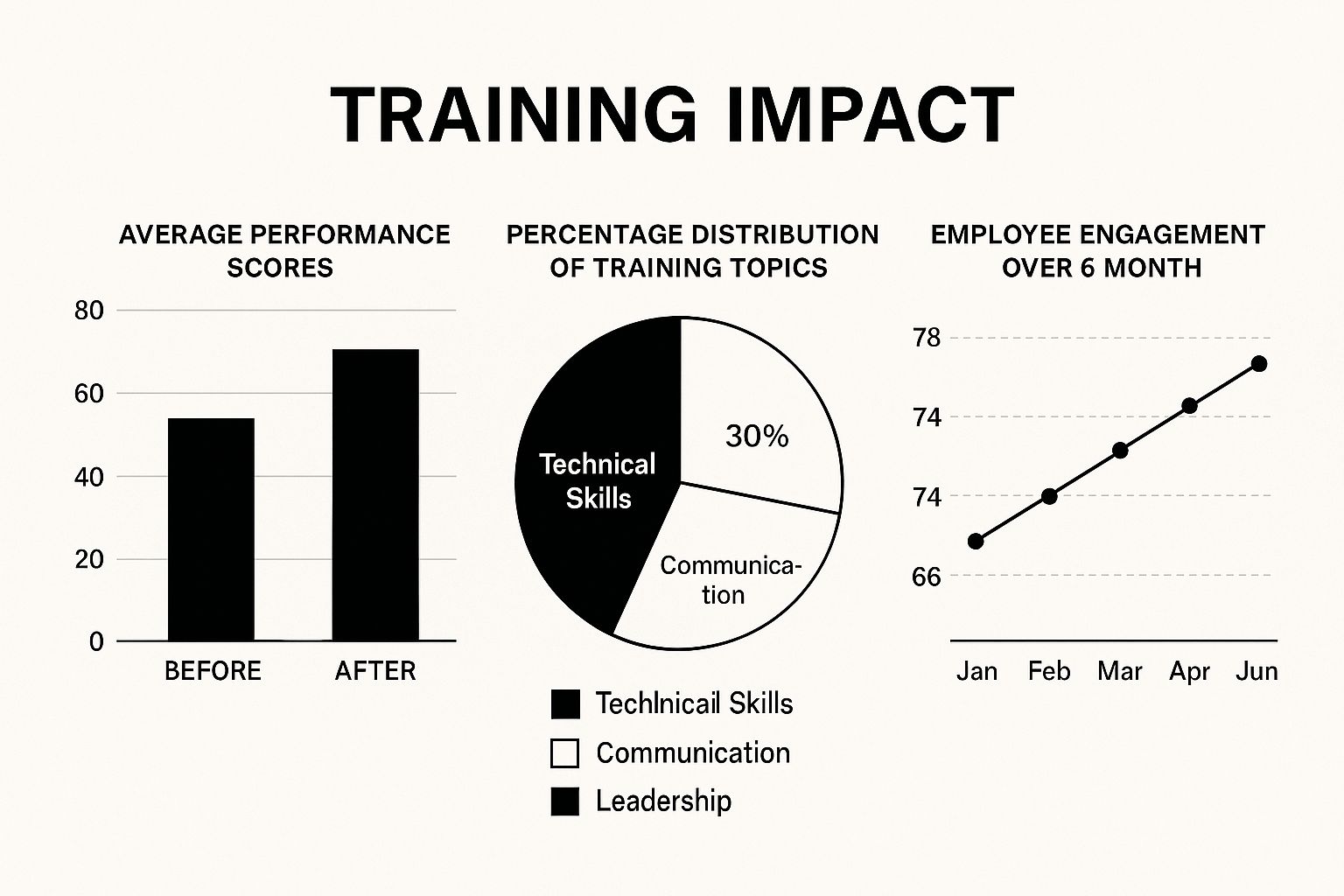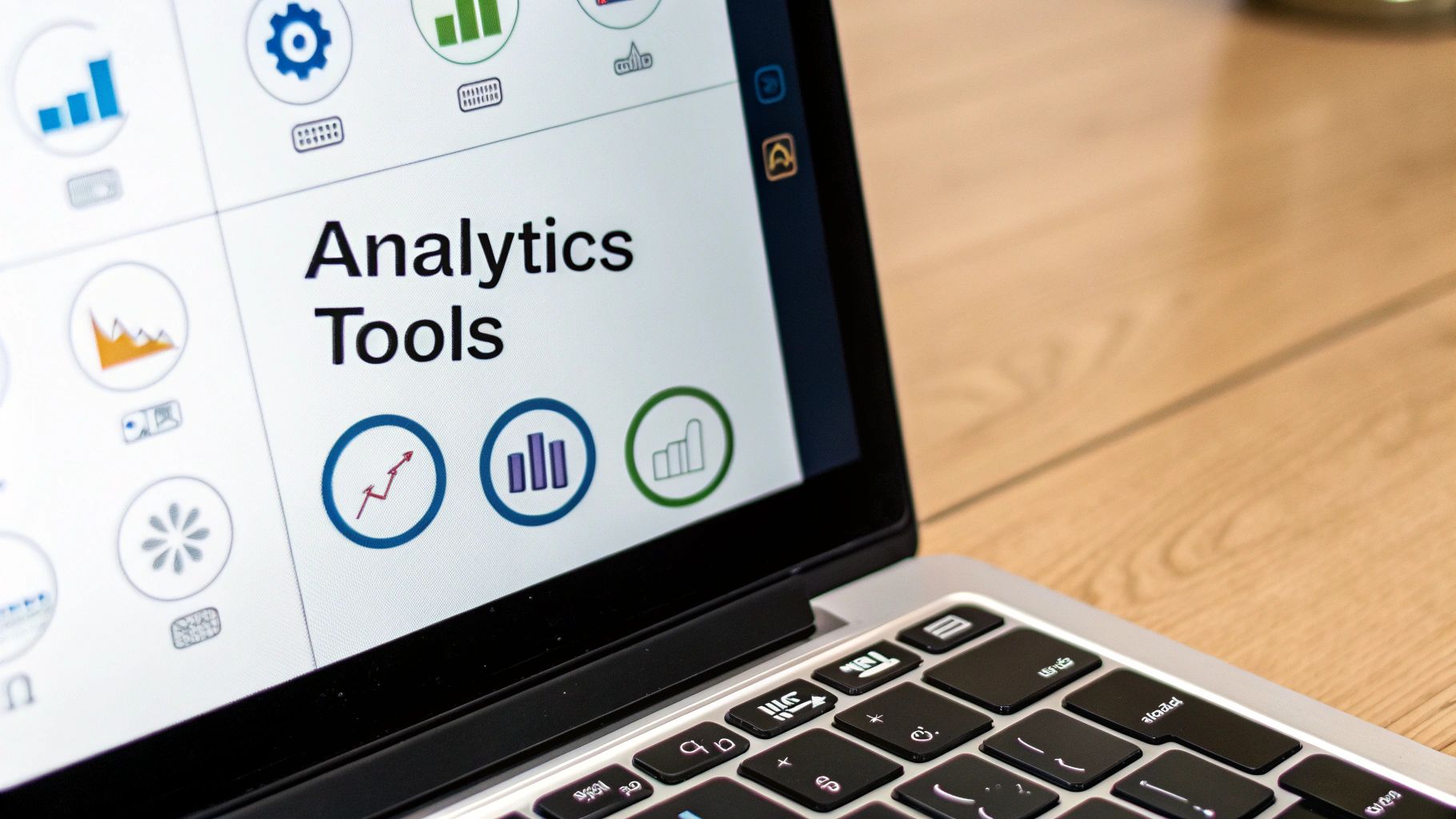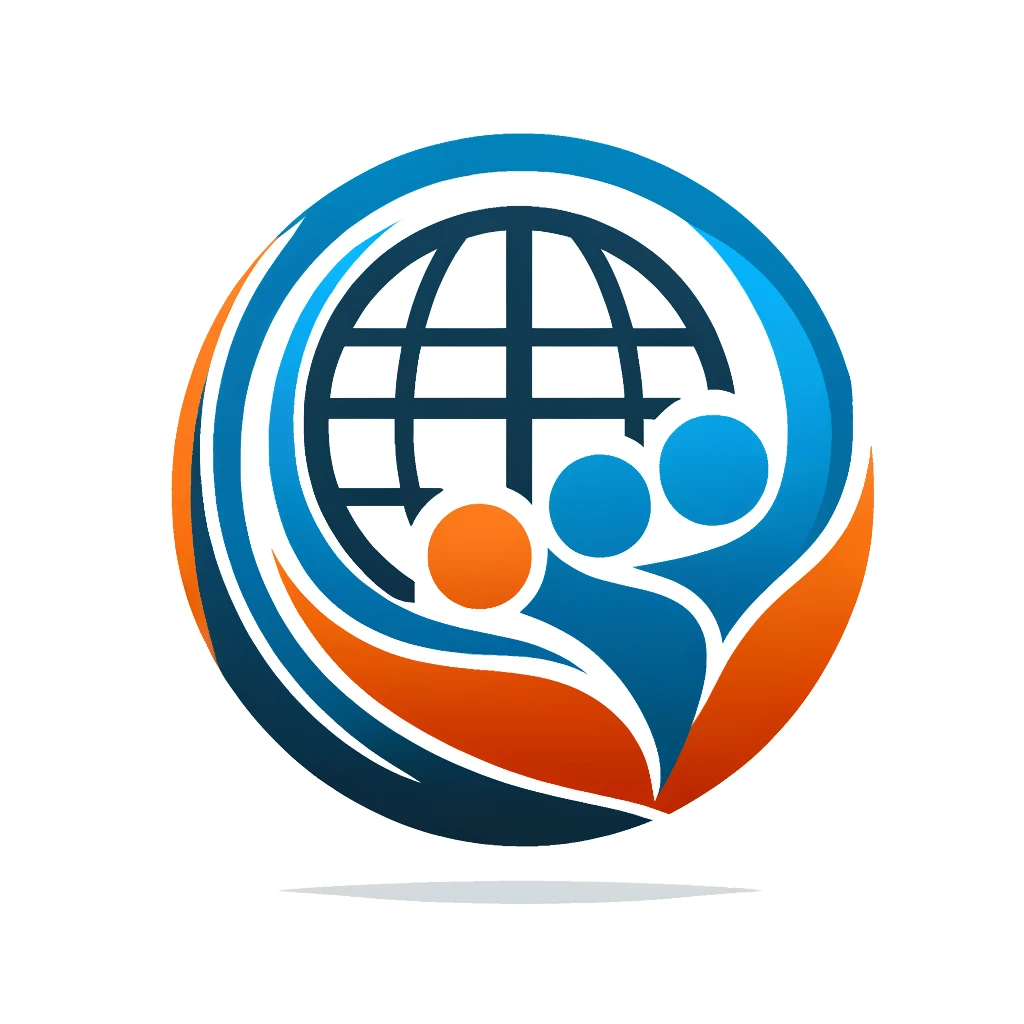Understanding Today's HR Analytics Training Reality

The distance between traditional HR and the data-focused needs of modern businesses is growing. Many organizations are recognizing the need to empower their HR teams with the skills to thrive in this new environment. This isn't just a passing phase; it's a fundamental change in how HR functions and contributes to a company's success.
Why HR Analytics Training Is Crucial Now
A primary force behind this change is the growing need for data-driven decisions. Hunches and instinct are no longer enough. For example, businesses need to understand what leads to employee turnover, not simply the rate at which it occurs. HR analytics gives teams the power to uncover these root causes and create focused solutions.
Furthermore, competition demands that companies optimize every part of their operations, including how they manage their workforce. This emphasis on data-backed insights is clear in the significant growth of the HR analytics market.
The market, valued at USD 3.61 Billion in 2023, is expected to reach USD 11.96 Billion by 2032. This growth highlights the increasing role of analytics in HR decision-making. More detailed information can be found here: HR Analytics Market Growth. Equipping HR professionals with analytics skills is essential to meeting the demands of this growing field.
Current Training Landscape: Successes and Shortcomings
The current state of HR analytics training is a combination of positive advancements and ongoing obstacles. Successful programs often emphasize practical application and hands-on work with real data, allowing trainees to immediately use their new skills in real situations.
However, many training initiatives miss the mark by overemphasizing theory without enough practical experience. This creates a gap between learned concepts and real-world application. Another common issue is a lack of alignment between training content and a company's specific needs.
For instance, a general analytics course may not address the unique data challenges a specific company faces. This disconnect can lead to frustration and a lower return on investment for training. The focus should be on building skills that directly meet the organization’s analytical requirements.
This is where tailored HR analytics training becomes invaluable. These customized programs allow HR professionals to gain specific skills, leading to more insightful data analysis and better workforce management.
Building Essential Skills That Actually Matter
Forget generic skill lists. Let's explore the competencies that truly set successful HR analytics practitioners apart. By studying high-performing teams, we can identify the technical skills that deliver the greatest impact and discover how to effectively combine statistical expertise with sharp business acumen.
Technical Prowess: The Foundation of HR Analytics
Technical skills are the bedrock of HR analytics. Mastering certain tools and techniques is essential. These skills are the driving force behind meaningful analysis. For instance, proficiency in data manipulation using tools like Excel or SQL is critical for cleaning and preparing data. Knowing statistical software like R or Python opens doors to advanced statistical modeling and predictive analytics.
- Data Manipulation: Cleaning, transforming, and preparing data for analysis.
- Statistical Software: Using programs like R or Python for advanced analysis.
- Data Visualization: Creating clear and compelling visuals to communicate insights.
- Spreadsheet Mastery: Advanced Excel skills for data manipulation and reporting.
Business Acumen: Bridging Data and Decisions
Technical skills alone aren't enough. HR analytics professionals also need strong business acumen. This means understanding the business context surrounding the data. They must be able to transform data insights into actionable business recommendations. For example, understanding the relationship between HR metrics and overall business objectives is key.
- Strategic Thinking: Aligning HR analytics with broader business goals.
- Communication Skills: Clearly explaining data insights to stakeholders.
- Problem-Solving: Using data to identify and address business challenges.
- Consulting Skills: Advising leadership on data-driven decisions.
Developing Proficiency: A Progressive Approach
Building these essential skills requires a progressive approach. Training programs should offer a structured learning path, combining theoretical knowledge with practical application. This helps HR professionals gradually build skills and apply their knowledge to real-world scenarios. For example, beginner-level training might cover basic data manipulation and reporting, while advanced training explores predictive modeling and prescriptive analytics.
The infographic below visualizes key data points regarding training effectiveness. It compares average performance scores before and after training, shows the distribution of training topics, and illustrates employee engagement trends over time.

As the infographic shows, targeted training significantly improves performance scores and employee engagement. The data reveals a clear link between training investment and positive outcomes. The shift in training topic distribution also highlights a growing focus on data-driven approaches in HR. This blend of technical skills and measurable impact underscores the value of building analytics capabilities within HR teams. Equally important is the ability to communicate these insights effectively.
To illustrate the skills progression in HR analytics, let's examine the following matrix:
The table below, "Essential HR Analytics Skills Matrix," provides a comprehensive breakdown of the technical and soft skills required at different proficiency levels in HR analytics. It also highlights the business impact of mastering these skills.
| Skill Category | Beginner Level | Intermediate Level | Advanced Level | Business Impact |
|---|---|---|---|---|
| Data Manipulation | Basic data cleaning and formatting in Excel | Data transformation and integration using SQL | Automating data pipelines and scripting with Python | Improved data quality and efficiency in reporting |
| Statistical Software | Descriptive statistics and basic visualizations in Excel | Statistical modeling and hypothesis testing in R | Predictive modeling and machine learning with Python | Data-driven insights for decision making |
| Data Visualization | Creating basic charts and graphs in Excel | Designing interactive dashboards using Tableau | Developing custom visualizations with Python libraries | Enhanced communication and understanding of data trends |
| Business Acumen | Understanding basic HR metrics | Applying HR data to solve business problems | Developing data-driven HR strategies | Aligning HR with business goals and maximizing ROI |
| Communication Skills | Presenting basic data reports | Communicating data insights to stakeholders | Influencing decisions through data storytelling | Improved stakeholder buy-in and data-driven decision making |
This table clearly outlines the skills progression and emphasizes the increasing business impact as professionals advance in their HR analytics journey. It also highlights the interconnectedness of technical skills and business acumen for maximizing impact.
The Power of Storytelling: Making Data Actionable
Finally, successful HR analytics professionals must be excellent storytellers. They need to communicate findings in a way that is engaging, persuasive, and easy to understand. This helps stakeholders grasp the importance of the data and make informed decisions. This ability to translate complex data into clear narratives is crucial for driving meaningful change. For example, using data visualizations and storytelling techniques can make complex analyses accessible to non-technical audiences. Connecting data insights with business outcomes elevates HR analytics from reporting to strategic decision-making.
Designing Training Programs That Stick

Many HR analytics training programs miss the mark. They often fail to consider how adults learn and retain complex information. Truly effective programs recognize this. They create engaging, practical learning experiences that directly translate into better job performance. This means moving beyond theory and embracing hands-on practice.
Structuring Programs for Maximum Impact
Top companies know that impactful training programs require a balanced approach. This blends theoretical foundations with real-world application. Using actual company data is key. This allows participants to instantly connect concepts with the daily challenges they face. This practicality makes learning stick.
Instead of just lecturing on statistical methods, successful programs use exercises with company HR data. Participants analyze real scenarios and build skills they can use right away. This accelerates learning and boosts retention. Plus, working with real company data fosters a deeper understanding of the organization's unique opportunities and challenges.
Maintaining Engagement and Measuring Outcomes
Keeping people engaged during longer training is essential. How do we do this?
- Interactive elements
- Gamification
- Peer-to-peer learning
These create a dynamic and stimulating learning experience. They keep participants motivated and invested in their professional growth.
But finishing a program doesn't equal true learning. Measuring real outcomes goes beyond test scores. It's about whether participants apply new skills practically. Do they contribute to measurable improvements in their daily work? This might involve observing on-the-job performance, gathering manager feedback, and tracking key metrics tied to the training goals.
The need for data-driven insights is exploding, evident in fields like workforce analytics. This market is expected to leap from $1.78 billion in 2024 to $2.01 billion in 2025. That’s a 12.5% compound annual growth rate (CAGR)! Factors like regulatory compliance and cloud-based solutions drive this growth. Learn more: Workforce Analytics Market Growth. This booming market shows just how much we need skilled data analysis professionals.
Adapting Successful Approaches to Your Organization
Effective training programs often showcase case studies. These illustrate real behavior change and business impact. Such examples offer valuable insights into how other organizations succeed. But remember, each organization has its own unique fingerprint. Copying another company’s program won't always get the same results.
Practical guidance is essential. Adapt successful approaches to your own specific situation. Analyze your organization's distinct needs, challenges, and available resources. Tailor the content, delivery, and evaluation. Align everything with your specific goals and circumstances. A flexible, adaptable approach is crucial for maximizing effectiveness and achieving long-term success. This makes the training relevant, engaging, and contributes to your overall organizational goals.
Choosing Technology That Enables Success
The right technology can dramatically shape the success of your HR analytics training. Choosing poorly, however, can lead to setbacks and ultimately hinder the growth of essential analytical skills within your team. This section guides you through selecting the right platforms and tools for powerful and effective training.
Evaluating Training Technologies for HR Analytics
Forward-thinking organizations go beyond simply adopting the newest training technology. They strategically evaluate platforms and tools based on their unique needs and objectives. This careful approach involves considering vital factors:
-
Skill Level: Align the technology with your learners' current abilities, whether they're just starting out, have some experience, or are already advanced. Introducing highly complex statistical software prematurely can easily overwhelm beginners.
-
Learning Objectives: Choose tools that directly support the specific skills you're aiming to develop. If your goal is to improve data visualization skills, for example, a platform specializing in interactive dashboards might be a perfect fit.
-
Integration: Ensure the technology integrates seamlessly with your current HR systems for smooth data access and reporting. This prevents data silos and amplifies the return on your training investment.
Creating Safe Learning Environments
Hands-on experimentation is key to developing analytical skills. Effective training programs create safe spaces for learners to explore data, test their assumptions, and learn from their experiences without the pressure of real-world consequences. This might involve using sandboxed datasets or simulated scenarios that mirror real-world business challenges. This approach builds confidence and nurtures a data-driven culture within your team.
Leveraging AI and Emerging Technologies
AI-driven learning systems can offer personalized learning paths and adaptive feedback, potentially accelerating skill development in HR analytics. It's crucial, though, to balance these cutting-edge tools with foundational training in core analytical concepts. While AI can enhance the learning process, it shouldn't entirely replace valuable human interaction and mentorship.
Building Progressive Pathways for Skill Development
The best training programs create progressive pathways that begin with beginner-friendly tools and gradually introduce more advanced analytical capabilities. This approach builds confidence as learners gain increasingly sophisticated skills. For instance, an introductory course could focus on basic spreadsheet skills, while later modules introduce statistical software like R or Python and data visualization techniques using tools like Tableau or Power BI. This structured approach makes the learning process less intimidating and far more effective.
Comparing Popular HR Analytics Training Tools
Selecting the right tool is paramount. To help you navigate the options, the table below, "HR Analytics Training Tools Comparison," offers a side-by-side look at popular training platforms and software tools. It highlights their suitability for different learning objectives and skill levels, provides typical cost ranges, and showcases key features to empower your decision-making.
To guide your exploration of HR analytics training tools, we’ve compiled a comparison table highlighting key features, best use cases, and cost considerations.
| Tool/Platform | Best For | Skill Level | Cost Range | Key Features |
|---|---|---|---|---|
| Excel | Basic data analysis and reporting | Beginner to Intermediate | Low (often included with Microsoft Office) | Data manipulation, charting, pivot tables |
| R | Statistical modeling and visualization | Intermediate to Advanced | Free (open source) | Comprehensive statistical libraries, data visualization capabilities |
| Python | Advanced analytics, machine learning | Intermediate to Advanced | Free (open source) | Powerful libraries for data manipulation, statistical modeling, and machine learning |
| Tableau | Interactive data visualization and dashboards | Beginner to Advanced | Moderate to High (subscription-based) | Drag-and-drop interface, interactive dashboards, data storytelling features |
| Power BI | Data visualization and business intelligence | Beginner to Advanced | Moderate (subscription-based) | Data modeling, report creation, integration with other Microsoft products |
| Specialized HR Analytics Platforms (e.g., Visier, Orgnostic) | Workforce analytics, predictive HR | Intermediate to Advanced | High (subscription-based) | Pre-built HR metrics, predictive analytics capabilities, data-driven insights for HR decision-making |
This table provides a solid foundation for exploring the range of available tools. Further research is recommended to ensure a perfect match between the specific features and capabilities of a tool and your team’s unique training requirements. By strategically choosing and implementing technology, organizations can equip HR professionals with the essential skills for confident, data-driven decision-making. This, in turn, elevates workforce management and contributes significantly to the overall success of your organization.
Overcoming Resistance And Training Roadblocks

Even with the best planning, training initiatives for HR analytics can hit some bumps in the road. These can range from team members who aren't on board to budget constraints and shifting priorities. This section explores practical solutions for navigating these common challenges within real organizations.
Addressing Resistance From HR Professionals
Experienced HR professionals might question the value of analytics, especially if they've relied on traditional methods throughout their careers. To address this, emphasize how training in HR analytics enhances, not replaces, their existing expertise.
Show them real-world examples of how analytics has led to positive outcomes for HR teams. Position analytics as a tool that empowers them to make more strategic contributions.
Involve these professionals in the training design. Their input can help tailor the program to their specific needs and ensure relevance to their daily work. This fosters buy-in and reduces resistance to new methodologies.
Managing Learning Curves For Non-Technical Team Members
Many HR professionals don't have extensive technical backgrounds. Training programs must address this learning curve effectively. Start with basic concepts and gradually introduce more complex techniques.
Provide hands-on practice with real data, using intuitive tools. For example, begin with basic spreadsheet skills and data visualization before moving on to statistical software like R or SPSS.
Offer personalized support and mentorship. This supportive environment builds confidence and accelerates learning.
Building Sustained Leadership Support
Ongoing support from leadership is essential for training success. Clearly articulate the business benefits of HR analytics training, demonstrating how it aligns with organizational goals.
Show how analytics can improve talent acquisition, reduce turnover, or enhance employee engagement. Quantify the potential return on investment (ROI), highlighting the positive impact on key business metrics. This data-driven approach demonstrates value and secures buy-in.
Addressing Data Privacy Concerns
Data privacy is paramount, especially in HR. Training programs must emphasize ethical data handling and compliance with regulations like GDPR. Transparency is key: Clearly explain how data will be used and protected, addressing privacy concerns.
Integrate data security best practices into the curriculum, equipping HR professionals with the skills to handle data responsibly. This builds trust and ensures responsible use of sensitive information.
Maintaining Momentum Through Setbacks
Implementing any new initiative will involve setbacks. Training programs should anticipate these and equip HR professionals with strategies for navigating them.
Foster a culture of continuous learning, encourage experimentation, and provide support for overcoming obstacles. Celebrate small wins to maintain motivation and reinforce the value of the training.
The global emphasis on data-driven decisions is reflected in the projected growth of the data analytics market, including HR analytics, from $14.85 billion to $68.09 billion by 2025. Explore this further: HR Analytics Market Growth. This expanding market underscores the need for skilled HR analytics professionals. By addressing resistance, managing learning curves, and building leadership support, organizations can implement effective HR analytics training programs that empower their HR teams and drive business success.
Key Takeaways
Building a data-driven HR function requires a strategic approach to training. It's about focusing on the skills that truly make a difference, designing programs that ignite passion, and selecting technology that empowers growth. This section offers actionable takeaways to guide your HR analytics training journey, setting your team up for lasting success.
Essential Skills For HR Analytics Success
Effective training starts with pinpointing the skills that matter most. These include technical proficiencies like data manipulation, statistical analysis, and data visualization. Just as vital are the soft skills, such as communication and business acumen. Blending these skills empowers HR professionals to transform raw data into powerful, actionable insights that drive real change.
- Prioritize practical application: Focus on skills that directly address real-world HR challenges, ensuring your team can immediately apply what they learn.
- Balance technical expertise with business understanding: Training should develop both technical skills and the ability to connect data insights to broader business objectives.
- Promote data storytelling: Emphasize the power of communicating data findings clearly and persuasively. This ability is key to influencing decision-making and driving impactful change.
Designing Engaging and Effective Training Programs
Successful training programs prioritize active learning and practical application. This means structuring programs that seamlessly blend theoretical knowledge with hands-on exercises using real company data, creating a dynamic and engaging learning experience.
- Structure for real-world application: Design training that allows HR professionals to apply their new skills to real-world scenarios, ensuring immediate relevance and impact.
- Measure real learning outcomes: Go beyond traditional test scores and evaluate whether participants are truly applying their new skills on the job, measuring practical impact.
- Maintain engagement with interactive elements: Incorporate interactive exercises, gamification, and peer-to-peer learning to create a more engaging and dynamic learning environment.
Selecting The Right Technology For HR Analytics Training
The right technology can significantly amplify training effectiveness. This means choosing tools tailored to different skill levels and learning objectives, fostering safe spaces for experimentation, and exploring the potential of AI-powered learning systems.
- Align technology with skill levels: Provide user-friendly tools for beginners and progressively introduce more advanced platforms as skills develop, ensuring a comfortable learning curve.
- Create safe spaces for experimentation: Allow learners to freely explore data and test their assumptions in risk-free environments, encouraging curiosity and innovation.
- Explore AI-powered learning: Leverage personalized learning paths and adaptive feedback offered by AI platforms like Coursera to create a more tailored and effective learning experience.
Overcoming Resistance and Roadblocks
Introducing new training initiatives often encounters resistance. Addressing these challenges head-on requires proactive strategies and a focus on clear communication.
- Address resistance from experienced HR professionals: Emphasize how analytics complements existing expertise and empowers more strategic contributions, showcasing the value-add.
- Manage learning curves for non-technical team members: Start with foundational concepts and gradually introduce more complex techniques, ensuring everyone feels supported.
- Build sustained leadership support: Demonstrate the ROI of HR analytics training and its alignment with organizational goals, securing buy-in from key stakeholders.
Building Momentum For Long-Term Success
Sustaining data-driven HR capabilities requires ongoing commitment and a culture of continuous learning. It's about celebrating successes, adapting to challenges, and fostering a growth mindset.
- Set realistic expectations: Understand that building data-driven HR is a journey, not a destination. Celebrate progress and embrace the learning process.
- Celebrate small wins: Recognize and acknowledge progress to maintain momentum and inspire continued growth and development.
- Foster continuous learning: Encourage ongoing skill development and create opportunities for continuous improvement, fostering a culture of lifelong learning.
Ready to empower your HR team with the skills to thrive in the data-driven world? The Global Human Resource Institute (GHRI) offers a range of courses, from foundational to expert, designed to equip HR professionals with the practical knowledge and skills they need to tackle modern business challenges. Explore our comprehensive programs and certifications, including HRQP, HRAP, and HRCE, to support your team’s development at every stage of their HR journey. Learn more about our programs and how GHRI can help your team excel.




0 Comments